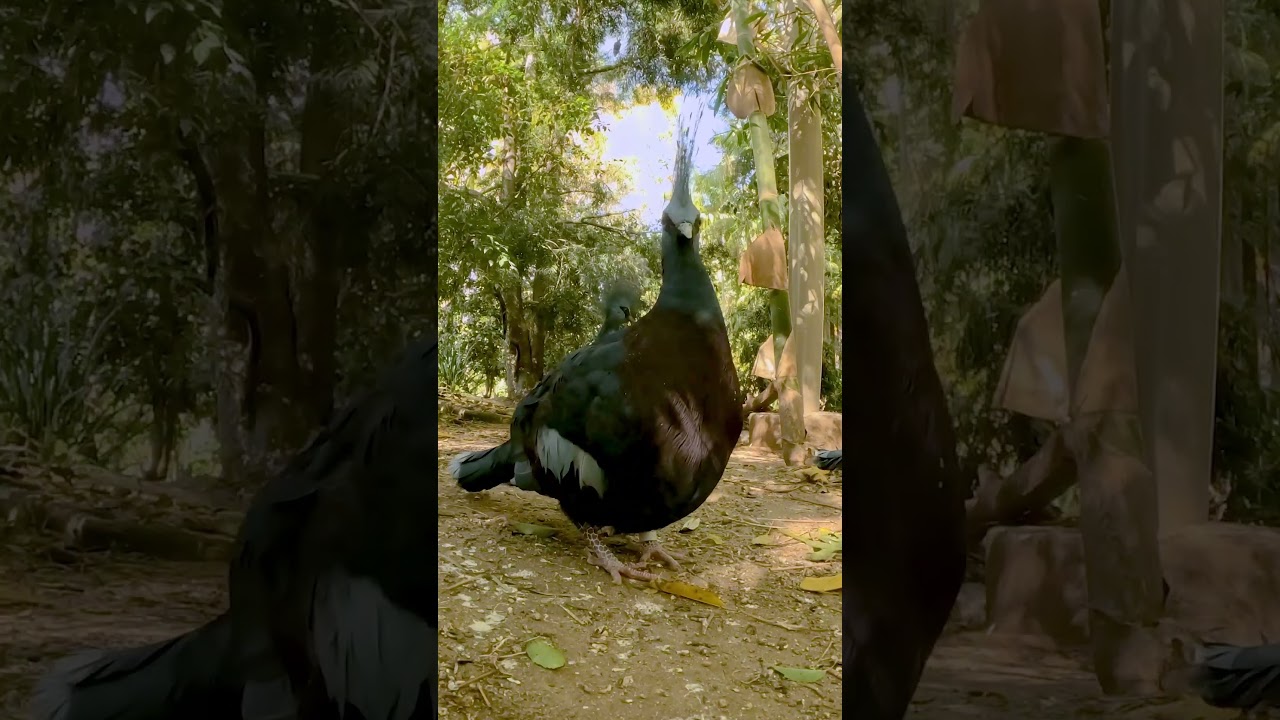- Introduction to the crowned pigeon family and the significance of bird watching for understanding avian biodiversity and ecology.
- Detailed description of crowned pigeons’ habitat, behavior, and physical characteristics that make them subjects of interest in bird-watching.
- Conservation challenges faced by crowned pigeons and the role bird watching can play in conservation efforts.
- Techniques and best practices for engaging in bird watching, specifically focusing on crowned pigeons.
- The impact of bird watching with crowned pigeons on ecological awareness and educational opportunities for wildlife enthusiasts.
Bird watching, an activity cherished worldwide, offers an opportunity to observe and appreciate the intricate details of avian life. Among the various species that capture the attention of bird watchers, the crowned pigeon family holds a special place. These striking birds are not only captivating due to their vibrant plumage and elegant crests but also provide insights into the avian world and its conservation challenges. A bird watching break with the crowned pigeon fam offers a window into avian ecology, biodiversity, and conservation practices.
Crowned pigeons belong to the genus Goura and are native to the lowland and swamp forests of New Guinea and surrounding islands. Known for their size and majestic appearance, they are among the largest pigeons, with an impressive wingspan that can reach up to 30 inches. Their striking blue and gray plumage, unique to each subspecies, is complemented by an intricate lace-like crest. This distinctive appearance makes them a favored subject for bird watchers and zoologists alike.
Observing these birds in their natural habitat provides valuable insights into their behavior and ecology. Crowned pigeons are notable for their ground-dwelling lifestyle, a deviation from the arboreal habits of many other pigeon species. By feeding primarily on fallen fruits, seeds, and invertebrates, they play a significant role in seed dispersal, aiding forest regeneration. Their social behavior, often seen in small flocks, highlights complex communication and social structures within avian species.
Despite their captivating beauty and ecological importance, crowned pigeons face numerous conservation challenges. Habitat destruction due to logging and agriculture continues to threaten their populations. Additionally, illegal hunting for their feathers and meat exacerbates the decline. Here, bird watching plays a critical role in conservation. By raising awareness of these issues, bird watchers can advocate for protective measures and support conservation programs aiming to preserve these extraordinary birds.
For those interested in bird watching, understanding the techniques and best practices is essential. To optimize the experience, it is beneficial to learn specific behaviors and habitats favored by crowned pigeons. Early mornings and late afternoons, when these birds are most active, provide the best opportunities for observation. Patience and a keen eye are crucial, as these birds often blend seamlessly with their surroundings, despite their size.
The impact of bird watching extends beyond the momentary joy of observing a crowned pigeon in flight. It fosters a deeper understanding of ecology and promotes environmental stewardship. Bird watching serves as an educational tool, offering unique insight into avian adaptation, survival strategies, and the interconnectedness of ecosystems. By engaging in bird watching with crowned pigeons, enthusiasts contribute to broader conservation efforts and inspire ecological awareness in others.
Each interaction with the crowned pigeon family is an opportunity for education and engagement. By leveraging bird watching platforms and sharing observations and data, enthusiasts can aid scientific research and biodiversity monitoring. This collaborative effort between the public and scientific community serves as a powerful force in wildlife conservation.
In essence, bird watching with the crowned pigeon family represents more than an observational hobby. It is a bridge to understanding and preserving the intricate dynamics of avian ecosystems. By immersing oneself in this pursuit, individuals can partake in the global effort to conserve these remarkable birds and the environment they call home. This dedication to preservation is a testament to the impact that bird watching can have on ensuring thriving avian populations for generations to come.
*****
Source Description
Facebook – https://www.facebook.com/SanDiegoZoo/
Instagram – https://www.instagram.com/sandiegozoo/
Twitter – https://twitter.com/sandiegozoo
Giphy – https://giphy.com/sandiegozoo
TikTok – https://www.tiktok.com/@sandiegozoo
Twitch – https://www.twitch.tv/sandiegozoo


